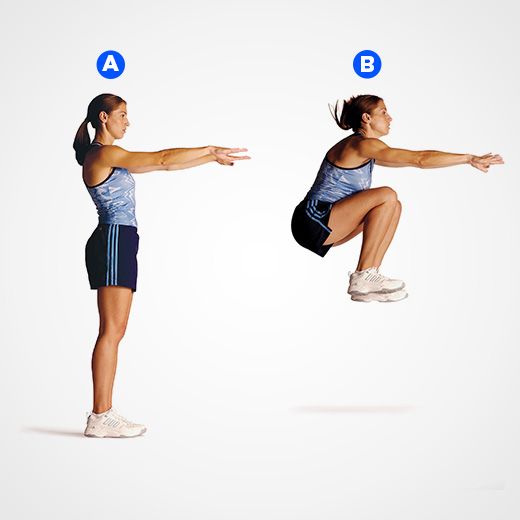
The most common fault students encounter with the tuck jump is falling forwards. Step 4: Practice, Practice, Practiceĭon’t forget to make sure that your students are practising and repeating this skill as much as possible – the more they practice the sooner they will nail it. Your students can also use their arms to create balance while jumping, by holding them straight out in front of their body as they bend their knees. It’s helpful to have a focal point on the wall they can look at while jumping. It’s important for students to keep their head up, rather than looking at the trampoline bed, otherwise they will fall forward. Bending their knees correctly will reduce the impact on their hips and knees, and ensure a safe landing. After the tuck position, they will need to prepare to land by slightly bending their knees as come close to landing on the trampoline. Once your students have executed the tuck jump they will have to refine their landing skills to ensure they can perfectly stop themselves. Step 3: Teach Them To Stick Their Landing This is the core ‘tuck’ shape needed for the jump, and they need to remain strong in it by putting their hands on their knees and keeping their legs together. When your students are at the peak of their jump, the students need to bring their knees up to their torso and place their hands on top of their knees, or on each side of their bent legs.
In out tuck jumps how to#
Once your students are jumping safely and using the correct posture, you will need to teach them how to tuck. Step 2: Help Your Student Peak Their Tuck Try to get your students to feel confident in stopping and starting from a straight jump, so they are able to control their skills and balance throughout the tuck jump, including the landing and take off.

This will help them build momentum and allow them to jump higher. As they begin to jump, they will need to reach up and, as they reach the peak of their jump, bring their arms down on either side of their body.

To do this, your students should begin with their arms pointing straight upward and their back straight. How To Teach A Tuck Jump Step 1: Get Your Student Jumpingįirstly, get your students to begin jumping. It’s perfect for beginners, with a difficulty level of this skill is 0, meaning it’s easily taught and will allow students to rapidly build their trampolining skills. One of the easiest skills to teach is a basic tuck jump: a straight jump that sees your student change shape as they reach the peak of their bounce, and pull their knees into their body. T he Florida Policy Institute estimates it would cost $1.9 billion if all students currently enrolled in a private school cashed in a voucher.There are certain staple moves that every trampolining teacher needs to be able to teach perfectly – core skills all your students need to master before they can move on to more complex forms. If every student in Florida enrolled in the state's school choice program, however, it could cost the state billions of dollars. Both the House and the Senate bills expand eligibility for education savings accounts worth up to $8,000 to all 2.9 million K-12 students. The latest version of the Senate bill that passed through the appropriations committee includes amendments to make it closer to the House version, including more requirements for homeschooled students.įlorida currently provides more than $1.6 billion annually, about 10% of the PreK-12 budget, in education savings accounts for vouchers. “We have not seen this money run out in past years,” Tuck said.Īmendments that would have curbed eligibility requirements or added more oversight for students with disabilities failed in the House.

Tuck said 70% of Florida students already qualify for vouchers, and the state does not expect an exponential jump of students enrolling.


 0 kommentar(er)
0 kommentar(er)
